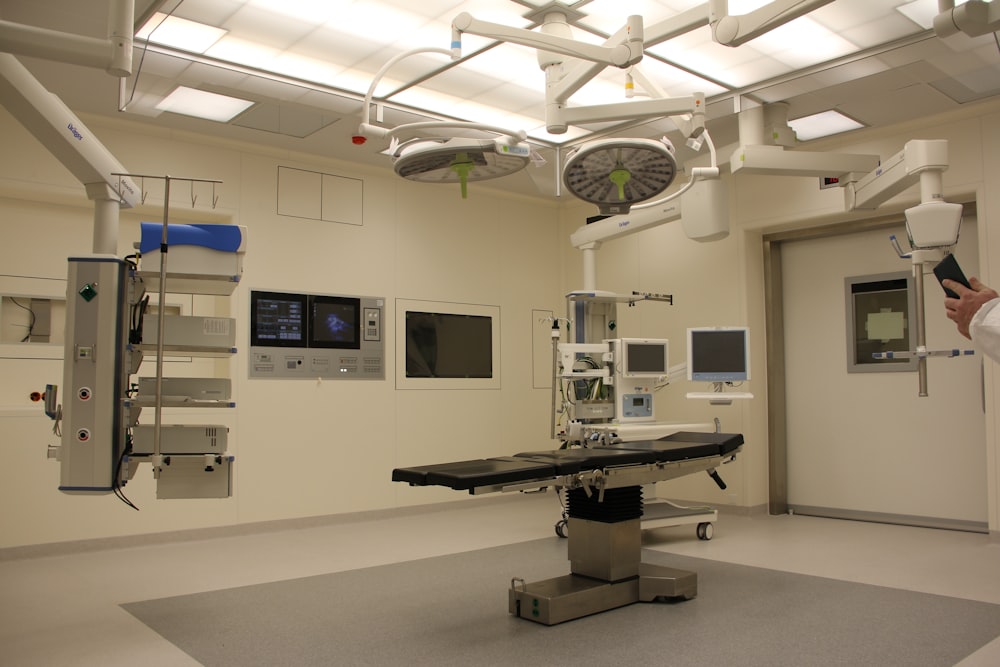dermatologist
Understanding Facial Skin Growth A Comprehensive Guide
Understanding Facial Skin Growth: A Comprehensive Guide
Facial skin growth is a common concern that many people encounter at some point in their lives. Whether it’s a benign skin tag, a wart, or a mole, these growths can be both physically and emotionally bothersome. In this comprehensive guide, we delve into the various types of facial skin growth, their causes, symptoms, and available treatment options.
Types of Facial Skin Growth
Facial skin growths come in various forms, each with its own characteristics and implications. Skin tags are small, soft, flesh-colored growths that often appear in areas where skin rubs against skin, such as the neck, armpits, and groin. Warts, caused by the human papillomavirus (HPV), can manifest as small, rough growths on the skin’s surface. Moles, on the other hand, are typically brown or black and can vary in size and shape.
Causes of Facial Skin Growth
The causes of facial skin growth can vary depending on the type of growth in question. Skin tags are believed to develop due to friction or rubbing of the skin, while warts are caused by viral infections. Moles, on the other hand, are usually the result of clusters of melanocytes, the cells responsible for producing pigment in the skin. Additionally, factors such as genetics, hormonal changes, and sun exposure can also contribute to the development of facial skin growths.
Symptoms of Facial Skin Growth
Facial skin growths can present with a range of symptoms, including itching, tenderness, and changes in appearance. Skin tags are often asymptomatic but can become irritated if they catch on clothing or jewelry. Warts may cause pain or discomfort, especially if they are located on areas of the body that experience friction or pressure. Moles may change in size, shape, or color over time, which could indicate a potential health concern.
Diagnosis and Treatment Options
Diagnosing facial skin growths typically involves a visual examination by a dermatologist or healthcare provider. In some cases, a biopsy may be necessary to confirm the diagnosis or rule out any underlying health issues. Treatment options for facial skin growths vary depending on the type and severity of the growth. Skin tags can often be removed with simple procedures such as freezing, cutting, or cauterizing. Warts may require topical treatments, laser therapy, or surgical removal. Moles may be monitored for changes or removed if they are deemed to be suspicious or cancerous.
Prevention and Self-Care
While not all facial skin growths can be prevented, there are steps that individuals can take to minimize their risk. Practicing good skincare habits, such as keeping the skin clean and moisturized, can help reduce the likelihood of developing certain types of growths. Avoiding prolonged sun exposure and using sunscreen regularly can also help protect the skin from damage that could lead to the formation of moles or other growths. Additionally, wearing loose-fitting clothing and avoiding tight jewelry can help prevent skin tags from forming in areas prone to friction.
Seeking Professional Advice
If you notice any unusual growths
Effective Rashes Treatment Solutions for Clear Skin
Understanding Rashes Treatment: Your Comprehensive Guide
Identifying the Culprit: Understanding Rashes
Rashes can be irritating, uncomfortable, and sometimes even painful. But before diving into treatment options, it’s crucial to understand what causes rashes in the first place. Rashes can stem from a variety of factors, including allergies, infections, irritants, and underlying health conditions. Identifying the root cause of your rash is the first step towards effective treatment.
Consulting with a Professional: The Importance of Dermatologists
When dealing with persistent or severe rashes, seeking professional medical advice is essential. Dermatologists specialize in diagnosing and treating skin conditions, including rashes. They can conduct thorough evaluations, perform tests if necessary, and provide personalized treatment plans tailored to your specific needs. Consulting with a dermatologist ensures that you receive expert guidance and care throughout your rashes treatment journey.
Exploring Treatment Options: From Topical Creams to Oral Medications
The approach to treating rashes can vary depending on the underlying cause and the severity of the rash. For mild cases, over-the-counter topical creams and ointments may provide relief from itching and inflammation. These products often contain ingredients like hydrocortisone, antihistamines, or moisturizers to soothe the skin. In more severe cases, oral medications such as corticosteroids, antifungals, or antibiotics may be prescribed to address the underlying cause of the rash and promote healing from within.
Managing Symptoms: Soothing the Itch and Irritation
One of the most challenging aspects of dealing with rashes is managing the symptoms, particularly itching and irritation. While treatment aims to address the underlying cause of the rash, it’s also essential to alleviate discomfort in the meantime. Applying cool compresses, taking oatmeal baths, and using gentle, fragrance-free skincare products can help soothe irritated skin and reduce itching. Avoiding scratching or rubbing the affected area is crucial to prevent further irritation and potential infection.
Preventing Recurrence: Strategies for Long-Term Relief
Once you’ve successfully treated a rash, the last thing you want is for it to come back with a vengeance. Preventing recurrence requires identifying and addressing any triggers or underlying factors contributing to the rash. This may involve making lifestyle changes, such as avoiding known allergens or irritants, practicing good hygiene, and maintaining a healthy skincare routine. Additionally, staying hydrated, eating a balanced diet, and managing stress can help support overall skin health and reduce the likelihood of future rashes.
Exploring Alternative Therapies: Natural Remedies and Holistic Approaches
In addition to conventional treatment options, some people turn to alternative therapies and holistic approaches to manage rashes. These may include herbal remedies, essential oils, acupuncture, or dietary supplements. While research on the efficacy of these treatments for rashes is limited, some individuals find relief from symptoms and improved skin health through these modalities. However, it’s essential to approach alternative therapies with caution and consult with a healthcare professional before trying any new treatment.
Seeking Support: Navigating the Emotional Impact of Rashes
Dealing with rashes isn’t just a physical struggle—it can also take a toll on your emotional well-being. Rashes, especially those that are visible or chronic,


